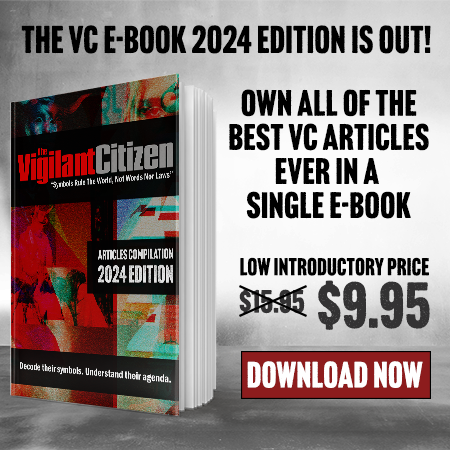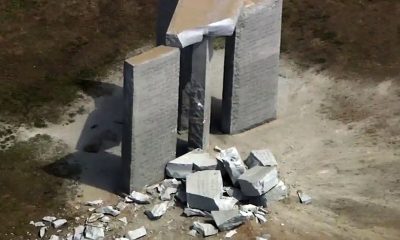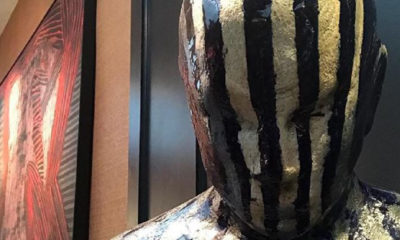

Sinister Sites
Sinister Sites: Baron Empain Palace, an Egyptian “House of Horrors”
Built by a wealthy industrialist, Baron Empain Palace is said to be cursed and haunted. Its story involves occult rituals, underground tunnels, and the bizarre deaths of the Baron’s wife and daughter within its walls. Here’s a look at the story and symbolism of this sinister site built in the heart of Heliopolis.
When one thinks of Egypt, one usually pictures the Great Pyramids of ancient times or the Islamic architecture of recent times. So when one comes across Baron Empain Palace—a bizarre building inspired by Hindu and Cambodian temples—it appears out of place. It’s almost as if it wasn’t built by Egyptians at all. That’s because it wasn’t.
The palace was built by Belgium-born Baron Édouard Empain, an extraordinarily wealthy industrialist best known for building the Paris Metro. During the end of the 19th century, Empain’s construction company took on massive infrastructure projects worldwide, some financed by the Rothschilds – the most powerful dynasty in modern history.
As seen in previous articles, the Rothschilds are the definition of “occult elite,” and, as we’ll see, Empain shared a keen interest in the dark arts.
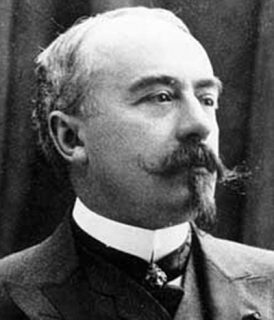
Baron Édouard Empain.
In 1904, Empain traveled to Egypt and convinced the local government to sell him 10 square miles of land North of Cairo. In this desertic area, Empain built Heliopolis, a modern city of “leisure and luxury” that would eventually attract elite figures from Egypt and the Arab world. At the center of it all, on an artificial mound, Empain built a palace that would become his family’s primary residence.

Baron Empain Palace during construction circa 1909.
No expenses or eccentricities were spared in the making of this palace. It was built with the finest materials and included some of the most intricate features imaginable. French architect Alexandre Marcel even erected the building on a rotating base, allowing occupants to view the entire city and bathe in sunbeams throughout the day. These strange steampunk-like characteristics lead some to claim that the building was constructed with the help of some form of unholy magic.
While the palace, like its surrounding city, was meant to be a place of “leisure and luxury,” some of the events that occurred inside its walls were neither leisurely nor luxurious. Here are some of the stories surrounding the palace:
- Empain conducted occult rituals in the Palace’s basement, in a room where nobody was allowed to enter. member of the Freemasons and other secret societies
- This basement room leads to a secret tunnel that connects the palace to the nearby Basilica Church.
- Empain’s daughter, who was paralyzed and riddled with psychological problems, could not leave the palace due to social stigma. She was found dead inside the building’s service elevator, in a probable suicide.
- Empain’s wife died by falling from the palace’s massive spiral staircase, in a probable suicide.
In 1929, Baron Empain died of a mysterious illness and, per his will, was buried in the crypt of the Basilica Church. Some years later, the palace was sold at an auction and soon became one of those creepy, abandoned places surrounded by mystery.
In the following decades, the palace was believed to be “haunted” as people reported strange noises, odd sightings, and even flickering lights. There were also persistent rumors of orgies and satanic rituals taking place in the abandoned palace.

The palace made the news a few times for being a gathering place of Satanists in the 1990s.
Despite its state of disrepair, the palace’s “energy” continued to attract a specific crowd. Its walls were “decorated” with graffiti depicting satanic symbols or unsettling words such as “evil evil ghost of death,” while countless bats flew around the premises.
In the early 2000s, the palace was thoroughly renovated and became a popular tourist attraction. Of course, the creepiest parts were closed off to the public, and the secret chambers were probably torn down. However, most of the palace’s art and sculptures were restored. While some of the stories surrounding the palace are based on unreliable accounts, the works of art provide a clear glimpse into the mindset behind its creator.
Here’s a closer look at the palace.
A Temple of Deceit

Visiting the Palace involves climbing stairs and coming across symbolic sculptures.
Walking towards the palace’s entrance, one is greeted with art of various origins, such as Hinduism, Buddhism, Greco-Roman mythology, and the Bible, along with some pieces leaning on the erotic side. At first glance, these sculptures give off a sense of refinement and high spirituality.
However, examining these sculptures and their subject matter more closely reveals a darker narrative: They allude to the darker side of human nature and spirituality. While most sculptures were impaled or decapitated throughout the years by trespassers, their symbolic meaning remains intact.

A marble sculpture depicting Narcissus welcomes guests to the palace. Interesting choice.
In Greek mythology, Narcissus was a young man who was so impossibly handsome that he fell in love with his own image reflected in a pool of water.
“As he reached his teenage years, the handsome youth never found anyone that could pull his heartstrings, indeed, he left in his wake a long trail of distressed and broken-hearted maidens, and one or two young men fell by the wayside too. Then, one day, he chanced to see his own reflection in a pool of water and, thus, discovered the ultimate in unrequited love and fell in love with himself. Naturally, this one-way relationship went nowhere, and Narcissus, unable to draw himself away from the pool, pined away in despair until he finally died of thirst and starvation.”
– World History Encyclopedia, Narcissus
Narcissus is the origin of the term “narcissism” and “narcissistic personality disorder,” a psychiatric condition marked by grandiosity, excessive need for attention and admiration, and an inability to empathize. In other words, Narcissus represents the exact opposite of a spiritual being. He is the embodiment of self-absorption.
Therefore, Narcissus’s welcoming of guests at Baron Empain Palace indicates that this is not a temple of spirituality; it is about the opposite: indulging in worldly excesses.
This happens to be the basis of Satanism. This next sculpture might confirm this fact.

Another marble figure depicts David stepping victoriously on Goliath’s head.
In the Old Testament, the giant Philistine warrior Goliath was defeated by the young Israelite shepherd David using a sling. It is the original underdog story. But why is a Biblical tale depicted in this Hindu-inspired temple? It is difficult to say. However, a bizarre detail etched at the sculpture’s base indicates that there might be an entire other meaning to this sculpture.

The base has 666 etched in Arabic numerals at the very center.

A chart of Arabic numbers. The number 6 is identical to what is seen above.
Other pieces around the premises also allude to the darker side of spirituality.

Near the entrance door stands a prominent sculpture of Shiva the Destroyer.
Shiva is the third god in the Hindu trinity, and while he has many forms and meanings, he is often called the “destroyer of worlds.” In the sculpture above, Shiva is definitely in a destructive mood as he’s surrounded by a ring of fire and cobras he uses as weapons. As seen in previous articles, the occult elite loves Shiva, probably because he is known to “destroy the universe to recreate it,” which happens to be the ultimate goal of the elite. Is this why Shiva statues exist in symbolic places such as CERN and the World Health Organization?
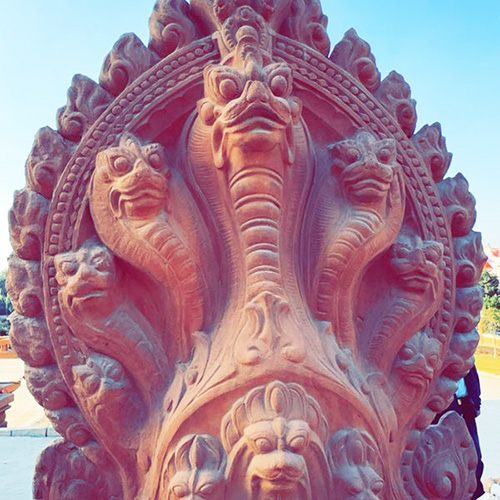
Throughout the palace, countless figures with angry and menacing eyes surround visitors, giving them an unsettling feeling of being watched.
Inside the palace, visitors are greeted with more symbolic art.
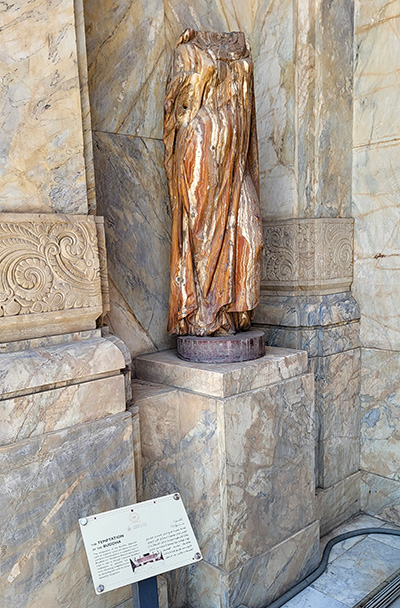
While this statue has been thoroughly defaced, the panel says it is “The Temptation of Buddha.”
A recurring theme in Buddhist art, this sculpture represents the demon Mara tempting Buddha with his three beautiful daughters, Rati (lust), Trishna (thirst), and Raga (delight).

A classic depiction of Buddah’s temptation.
While this story is about resisting temptation, the Baron probably selected it because it involves demons, lust, and seductive daughters.

Buddha sits on twin pillars similar to those guarding the entrance of Masonic temples.

A classic Masonic chart depicting the twin pillars of Freemasonry. Baron Empain was most likely a Freemason.
Most of the palace’s original objects and furniture are long gone, leaving visitors to gaze at mostly empty rooms. However, one of the palace’s most striking features can still be experienced.

A dizzying spiral staircase goes all the way up the palace’s massive tower.
It is from the top of this staircase that the Baron’s wife fell to her death. This grim fact sums up the story of the Baron Empain Palace: Behind the guise of wealth and luxury lay complete moral decay, profound distress, and a cloud of dark energy that can still be felt today.
In Conclusion
The Baron Empain Palace is the definition of a “sinister site.” It was built by a man of incredible wealth and connected with the world’s most powerful dynasties (the Rothschilds). Not unlike the elite of today, he was obsessed with occultism and mankind’s darkest impulses.
Through a collection of carefully chosen pieces such as Narcissus, Shiva the Destroyer, and the literal number 666, the palace signals (to those in the know) the true purpose of its “temple.” While, in its upper levels, the palace welcomed lavish balls and elite gatherings, its lowest levels were the site of dark activities such as occult rituals, orgies, and blood sacrifices. Who even knows what happened in that underground tunnel?
Baron Empain Palace was built on a rotating base so that it could always bask in sunlight. However, despite the unrelenting presence of the Egyptian sun, the palace will forever be surrounded by darkness.
- Hmm 🤔
- Donald Trump attends WEF conference in Davos (January 2020)
- 100% Proof Our Government is Hiding Nephilim Bodies & Are Trying to Bring Back Nimrod/Gilgamesh. Could Nimrod be the Beast of Revelation 17:8-11?
- Tesla's Elon Musk: We're 'Summoning the Demon' with Artificial Intelligence
- Lindsay Mills : Are you aware of occult symbolism in Her pictures..?!?
- LA Fire Attack Map is identical to the LA Smart City Rail Map
- Birds of a feather flock together …
Get an e-mail notification as soon as a new article is published on The Vigilant Citizen.
-

 Movies and TV2 months ago
Movies and TV2 months agoAdrenochrome and Ritual Humiliation: The True Meaning of the Movie “The Substance”
-

 Pics of the Month3 months ago
Pics of the Month3 months agoSymbolic Pics of the Month 10/24
-

 Latest News2 months ago
Latest News2 months agoKamala’s Campaign Was Objectively the Worst in Recent History
-

 Pics of the Month2 months ago
Pics of the Month2 months agoSymbolic Pics of the Month 12/24
-

 Latest News2 months ago
Latest News2 months agoWas the Jake Paul vs Mike Tyson Fight a Humiliation Ritual?
-

 Latest News3 months ago
Latest News3 months agoAn “Urban Opera” in Toulouse Using Massive Machines is Denounced as a Satanic Ritual
-

 Movies and TV1 month ago
Movies and TV1 month agoThe Hidden Meaning of “Smile 2”: It’s About Monarch Mind Control
-

 Latest News1 month ago
Latest News1 month agoIt Was Bound to Happen: Jay-Z Accused of Abusing a 13-Year-Old Girl
